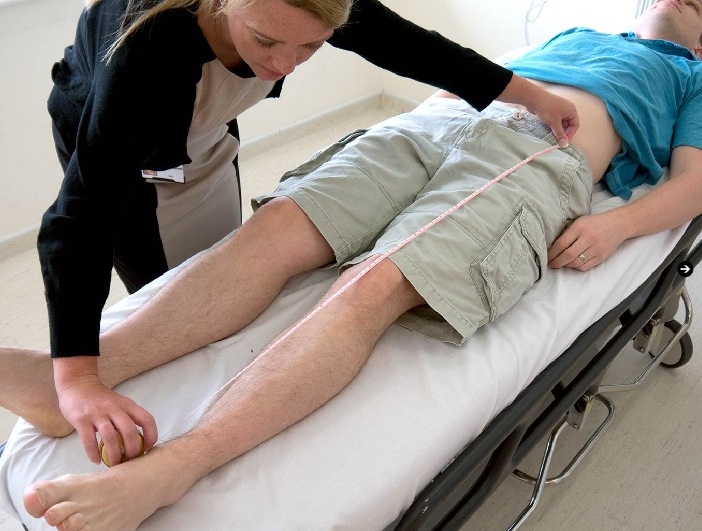Limb length discrepancies are a common concern for many individuals, often affecting both their physical appearance and overall quality of life. One leg being longer than the other might cause physical discomfort and postural problems. For some, these discrepancies can lead to persistent back, hip, or knee pain. It can make walking or running difficult and possibly produce a limp in severe cases. Thankfully, medical advancements in orthopedics have made it possible to address these issues, with leg shortening surgery emerging as one of the most effective solutions.
Understanding Limb Length Discrepancies
Limb length discrepancies occur when one leg is shorter or longer than the other. This syndrome can be caused by congenital problems, limb damage, or diseases like polio or cerebral palsy. Regardless of the cause, the effects of a limb length discrepancy can be far-reaching, impacting an individual’s gait, posture, and comfort. Untreated, it can cause hip, knee, and spine problems that make regular mobility difficult.
What Is Leg Shortening Surgery?
Advanced orthopedic surgery to shorten a leg to match a shorter leg helps patients achieve a more balanced, symmetrical posture. While limb lengthening is a more commonly known procedure, where the goal is to lengthen a limb to correct discrepancies, leg shortening is used when one leg is too long, and a reduction is needed.
The procedure is done by surgically removing a portion of the bone in the longer leg, followed by a period of recovery and rehabilitation. During this time, the leg adjusts to its new length, and the patient gradually regains strength and mobility. The goal is to ensure that both legs are the same length and that the overall balance of the body is restored. This process not only corrects physical discrepancies but also helps restore proper alignment to the body, thus preventing future health complications. For individuals considering leg shortening surgery, the LimbplastX Institute offers expert consultations and personalized treatment plans to help restore balance and improve overall mobility.
The Need For Leg Shortening
The need for leg shortening usually arises when a person experiences significant functional limitations due to a difference in leg length. This difference may lead to an uneven gait, which can cause one leg to bear more weight than the other. Uneven pressure distribution can cause joint degradation, muscle imbalances, and persistent hip, knee, and lower back discomfort. Untreated imbalances can worsen, making it hard to walk, run, or stand for long periods.
Correcting limb length discrepancies through leg shortening helps to restore proper balance in the body, ensuring that both legs bear an equal amount of weight during movement. This correction can alleviate pain and discomfort caused by misalignment, improve the overall function of the body, and enhance a person’s ability to engage in daily activities without pain or difficulty.
Benefits Of Leg Shortening Surgery
One of the primary benefits of leg shortening surgery is the improvement in posture. When both legs are the same length, the body can move more naturally and efficiently. This can help reduce the strain placed on the hips, knees, and back, which is often exacerbated by uneven leg lengths. Therefore, leg shortening surgery generally reduces chronic pain and suffering, especially in the lower back and legs.
Another important benefit is the restoration of a natural gait. People with limb length discrepancies often walk with an uneven stride, which can lead to additional musculoskeletal issues over time. By shortening the longer leg, the patient’s gait becomes more balanced, and they are able to walk with greater ease and fluidity. This can significantly improve mobility and reduce the risk of falls or accidents caused by unstable movement.
Additionally, many patients experience an improvement in their self-esteem and confidence. For those with noticeable limb discrepancies, the physical imbalance can be a source of embarrassment or discomfort, particularly in social situations. Leg shortening surgery can help restore symmetry and allow patients to feel more confident in their appearance, improving their overall mental and emotional well-being.
The Recovery Process
While leg shortening surgery offers numerous benefits, it’s important to note that the recovery process can be quite involved. After the procedure, patients must allow the body time to heal and adjust to the new leg length. Rest, physical therapy, and rehabilitation may be needed to recover strength and mobility.
Physical therapy is essential for leg shortening surgery recovery. A customized rehabilitation program can increase leg flexibility, strength, and range of motion, restoring full functionality. Depending on the patient, most can return to normal activities within a few months, but some may need longer.
Conclusion
Leg shortening surgery is a powerful tool for correcting limb length discrepancies and restoring balance to the body. By reducing the length of the longer leg, patients can experience significant improvements in posture, mobility, and overall quality of life. While the recovery process requires patience and dedication, the results of this surgery are often life-changing, allowing individuals to walk, run, and engage in everyday activities without discomfort. For those struggling with the challenges of uneven leg lengths, leg shortening surgery offers a viable and effective solution, helping to bring balance back to their lives.

